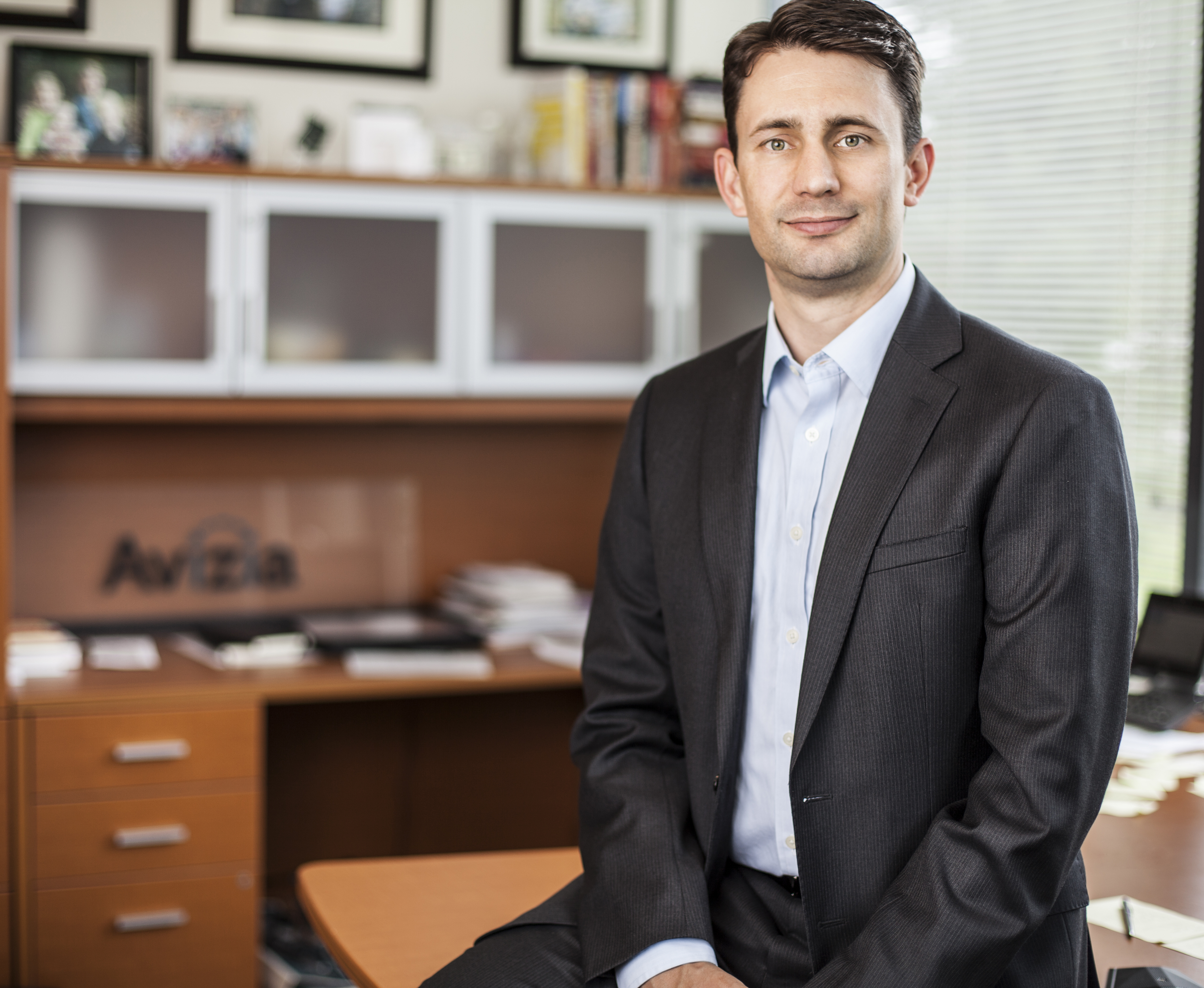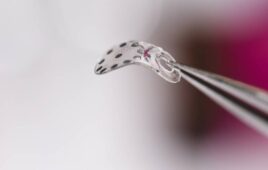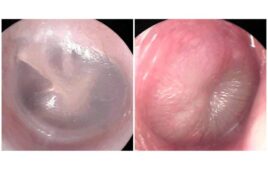One of the technology areas that is helping to enable a revolution in healthcare is telemedicine. Providing immediate access to physicians, eliminating travel requirements, and cutting the costs of potentially unnecessary visits, telemedicine solutions give both patients and doctors new freedoms when compared to the traditional healthcare visit. Additionally, new complimentary technologies are helping to supplement the amount of information doctors receive on patients through telemedicine systems. In this interview with Mike Baird, CEO and founder of Avizia, he discusses many of these aspects of telemedicine, the advantages the technology offers, adoption of it, and where it’s headed.
Sean Fenske: Thank you for taking time to speak with me about your technology. Can you start by telling me what the inspiration was for the creation of the Avizia telemedicine solution?
Mike Baird: I am the proud parent of five kids, which means I am an above-average user of the healthcare system, and as a technologist, I wanted to find a way to improve the delivery of healthcare. When we launched Avizia, we saw an opportunity to improve the way that we deliver care and provide a technology platform for hospitals. Our passion was to deliver a better patient experience figuring out ways to lower the cost of care and to help extend the reach of specialists so that even people in rural areas had access to high quality medical care from any specialty.
Fenske: Can you please tell me about the system?
Baird: We’ve developed the first end-to-end telemedicine platform. When we started Avizia, we saw multiple vendors in the marketplace that were creating parts to a solution and they would throw those parts over the fence to the hospital IT department and expect them to put it together. What’s different about Avizia is that we set out to build a technology platform that covers all aspects of telemedicine.
There are three parts to this: First, we have hardware — different medical devices that connect doctors to doctors and doctors to patients. This can be accomplished using one of our purpose-built mobile telemedicine carts, other video devices, or even your own mobile device such as an iPad or iPhone. Second, we provide a cloud-based software platform that enables the telemedicine workflow. This combines medical documentation for various use cases as well as a platform to connect our products with back-end systems in hospitals, such as electronic medical records, PACS systems, e-Prescription, Physician call-calendars, and paging systems. This transforms a virtual visit to flow just like an in-person one. We can pull in patient information, see history, control our devices, and send a prescription or other orders out after a visit. Finally, the third part of our solution is professional services that tie it all together. This can be our implementation team that goes on site to deploy the Avizia solution, our maintenance and monitoring service, or consultants to help you perfect your telemedicine program using the best practices in the market. Avizia is the only vendor that offers this full telemedicine platform — the medical devices you need to connect, the software to tie them all together, and the services to help you deploy it.
Fenske: When I was introduced to this technology, it was presented as a telehealth solution for stroke. Why did you decide to focus on a specific healthcare concern?
Baird: What’s great about the Avizia telemedicine platform is that it’s not just for stroke! Stroke is one of the many use cases supported on our platform. We have customers using Avizia for dermatology, pediatrics, cardiology, behavioral health, diabetes, wound care, nursing homes, as well as stroke. It’s an extremely flexible solution.
In some cases, it’s using one of our telemedicine carts in an emergency department where I need to have a battery-powered unit that I can wheel out very quickly and plug in various devices. In other cases, you may have a nurse that is visiting a patient in hospice using an iPad that will connect back via one of our software solutions. The Avizia telemedicine platform works across a wide variety of use cases.
Fenske: Are you looking to pair monitoring technologies to your solution that would provide biometric information to the doctor?
Baird: Yes. Today we already plug in with various EHR systems on the market and we access patient data that way. Additionally, we sell and support a variety of medical-like digital stethoscopes, otoscopes, examination cameras, etc. that capture images and audio that you can upload to the platform. But one of the exciting developments in the marketplace is wearable trackers with sensors that gather data in real time. We’re working on ways to capture that information from a user that has one, such as from an Apple watch to get a long term history of their heart rate, blood pressure, or other data that we can simply upload into our platform. That’s future-state for us, but it’s definitely something that we’re looking into.
Fenske: What are the challenges involved with developing this type of telemedicine solution?
Baird: We deliver products used in high-stakes, acute care situations. This requires us to comply with many more regulatory requirements than most markets have. Our products are registered with the FDA as Class 1 medical devices. That means we have developed a quality management system to make certain that we are capturing data from end-user feedback and any incidents.
Additionally, since we have sold products in over 35 countries, we comply with the local medical device requirements of that country. Because patient safety is of upmost importance to us, we pay strict attention to the various safety and medical regulations that apply to our products.
Beyond regulations, our solutions are used in a wide variety of use cases. Not all hospitals are the same. Not all nurses are the same. Not all use cases are the same and we have developed flexible products that can be used in a wide variety of situations, whether that’s stroke care or psychiatric care, dermatology, cardiology, etc. Our success comes from building products that are simple, easy-to-use, and very approachable for the user, while also employing a clean design strategy so that you don’t have bulk or cable clutter issues for clinicians trying to navigate crowded hospital floors. Providing a world-class product isn’t easy and is something we take on with pride.
Fenske: How does the FDA respond to this type of technology as far as providing approval?
Baird: The vast majority of our products are registered as FDA Class 1 devices. That isn’t as complicated as say a replacement hip or cancer drug where long term patient trials are required. Our products are classified as Medical Device Data Systems (MDDS) and we meet the safety and reporting requirements of the FDA to protect patient safety. In addition we need to protect patient privacy and comply with HIPAA and HITECH requirements. For example, having medical isolation transformers on our devices so that there’s not any risk of spark in an area where there might be high oxygen or having multi-level firewalls protecting sensitive patient information. We take those standards very seriously and all of our products meet or exceed the regulations on the market today.
Fenske: Can you go a little deeper into how you are addressing security in your system?
Baird: We address security in a variety of ways. Because we deal with patient health information (PHI), we’re subject to HIPAA and HITECH requirements. We take these very seriously. In our software cloud, we use healthcare-compliant data centers and store our patient information behind strict security and multiple layers of firewalls. Avizia always co-signs on the business associate agreements for delivering healthcare, which means we have shared liability with the hospital for providing care. It’s something we take very seriously to protect our patients.

Mike Baird is the CEO and founder of Avizia, a company that offers complete end-to-end telemedicine technology solutions.
Fenske: What is the response from the insurance companies regarding reimbursement for a visit through a telemedicine solution?
Baird: This is one of the most exciting trends in telemedicine today and has been evolving rapidly. Medicare covers telemedicine in all 50 states, Medicaid covers 47, but an area of particular interest is what we call “private parity” laws that enable private insurance reimbursement of telemedicine. Two years ago, there were only ten states that had private parity laws in place. A year ago, it was 17 and today we have 29 states plus the District of Columbia that have private insurance parity reimbursement laws in place with telemedicine. This is really exciting. It means more patients have access to quality medical care and it shows that telemedicine is driving down costs and providing quality outcomes.
Fenske: Do you find healthcare professionals are uneasy about using cloud technology?
Baird: Healthcare professionals are adapting like all industries. To use an analogy from the banking industry — 20 years ago, we wouldn’t have thought that a snapshot of a check was an acceptable way to deposit a check. Every one of us would go down to the bank teller and we would deposit our check in person. Today, we don’t even think about it. While the healthcare industry can, at times, be a bit behind, doctors and providers want to leverage technology to improve the delivery of care to their patients. They want to figure out ways to help them and make their lives better and increasingly, they’re embracing telemedicine technology.
To give an example, I know many neurologists that normally would cover five or six different hospitals and be on-call and roving between a number of them. Using telemedicine, they can work from home and spend their time seeing patients instead of being stuck in traffic driving between facilities. This also cuts down response time, which improves patient outcomes. And that’s a good thing for everybody. The doctor’s not wasting time, they get to see more patients, patients in other areas get extended access to care, and everybody wins. As doctors get comfortable with the idea, we find they are embracing telemedicine and, in many cases, it is doctors driving these projects forward within hospitals.
Fenske: When implementing this type of offering, are patients more likely to use it for extremely minor cases (i.e., increasing the actual number of visits a clinic receives)?
Baird: It depends. What seems interesting about telemedicine is, if I were to tell you the three most common use cases today, one of them would be what we call urgent care — relatively minor things such as a sore throat, pink eye, whatever it may be. But the other two most common use cases are highly acute care areas — think of telestroke with a neurologist or behavioral health with a psychiatrist via telemedicine. So telemedicine covers the most common and most critical use cases.
In other ways, telemedicine can divert patients away from costly care that is unnecessary. For example, if my child has a fever and it’s on the weekend, I can go to the ER or I could do a virtual visit with my provider; in many cases, the virtual visit will wave off an ER visit. In those cases, patients have actually avoided a significant amount of cost and time wasted, and telemedicine is helping lower healthcare costs and burden in the system.
Fenske: The amount and availability of diagnostic information through new technology is really starting to explode. As more diagnostic solutions are made available directly for consumers, will that type of technology be incorporated into telemedicine solutions like this?
Baird: Patients are quickly adapting wearables, personal monitoring devices and health trackers. They are gathering data is most easily shared through venues like telemedicine. When I show up at my doctor today and they take my blood pressure, in most cases, I’m actually not getting a good reading. I have stress-induced hyper-tension from being with a doctor and I actually get a reading that’s probably 5 or 10 points higher than normal. It’s much more effective if I have a platform at home where I can monitor my blood pressure over time and save it into something like Apple’s Health kit on my phone, and when I log in for a telemedicine visit, I can upload two months’ worth of blood pressure readings. That data is significantly more useful for a doctor to assess what my actual health is than a spot-reading that’s done under some level of duress. We see this convergence coming together. The increase of wearables and diagnostic technology dovetails very nicely with the advent of telemedicine and having more data at the ready for doctors to assess.
Fenske: What’s the next step/generation for telemedicine technology?
Baird: I believe the technology is finally at the level where it’s accessible for everybody. We’re starting to see this in a wide variety of hospitals. Avizia is now in more than 35 of the top 100 integrated delivered networks in the country today. Most insurance plans are starting to offer some level of telemedicine coverage. So the next generation for us is making telemedicine pervasive. Every single insurance provider should have access to telemedicine. Every single hospital should have telemedicine available at the very least in the emergency department but in more forward-looking hospitals, you are starting to see screens in every single patient room because if your specialist isn’t within the four walls of the hospital, there’s no reason that I shouldn’t be able to bring them in from somewhere else. We really believe that next step is taking telemedicine from something that is available in 10% of locations today to being pervasive in every single hospital or healthcare clinic in the country.
Fenske: In closing, do you have any other thoughts or comments you’d like to share on telemedicine?
Baird: We believe that telemedicine is the future. If you are against it, you probably haven’t used it. The next time you are sick, there is a greater than 50% chance it will be outside of a 8:00 to 5:00 window where a traditional doctor visit makes sense. Go to one of our customers, such as MeMD.com, and do a virtual consult. I promise you will shocked at how easy it is. When it’s a Saturday and you have a sore throat coming on and a crazy week ahead, the ability to see a doctor from the comfort of your home on your schedule, to have a prescription routed to your pharmacy and speed your recovery, is a fantastic experience. Once you’ve had that experience, you never want to go back. Just like you don’t miss going to wait at the bank to deposit that check. What’s been fun for us at Avizia is that we have been in the heart of telemedicine for the last five or so years and we are seeing this technology taking off — its getting better, easier to use, and more available. We look forward to a world where telemedicine is everywhere.




